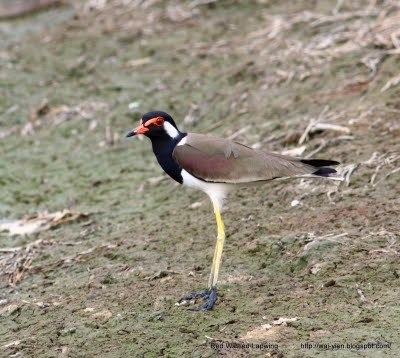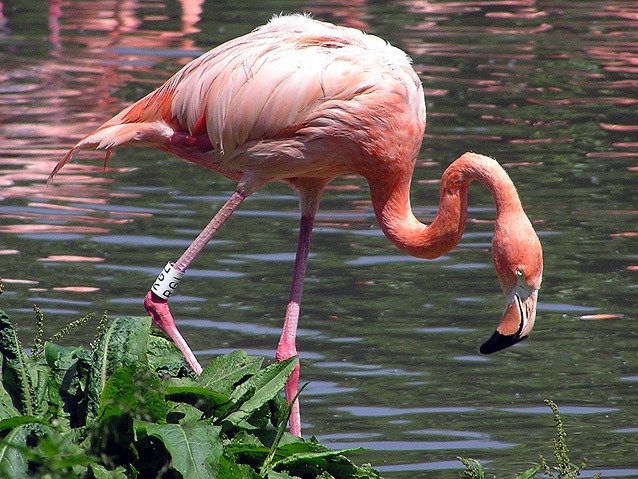Many families entertain the idea of getting a pet at one time or another.
Sometimes it is the children that insist that their lives will not be complete
without a friendly pet to have fun with. Then there is the posture of a
bird. Believe it or not, birds perch differently. For example, a Flycatcher
perches vertically (straight up and down) when on a branch while a Vireo
perches horizontally (almost lying down) when on the same branch.
Here is a feature that is often overlooked: bird-proof door locks. You
should get a cage that your bird can't escape from. Just think about what
would happen if your bird escaped & was free the entire day while you're
out!
Bird droppings can become very erosive, and the longer they sit on your
cage, the more damage can occur. Even the best brand name cages will
only last 3-4 years if not appropriately taken care of.
With so many people hoping to see a bird they'v never seen before, it's
not surprising to see a clamoring for the latest tips and tools to get the
job done.
Handfeeding: How To Do It Best
Birds are such delicate animals that they must be handled carefully.
Handfeeding is usually one of the best ways to interact with them.
However, just the same, it should be done with care and there are some
things that must be remembered and followed.
Birds, especially pet birds, have somehow learned that people are their
greatest benefactors. Although they have the capacity to live on their
own under nature's nurture, years of interaction with human beings have
taught them to accept people as good friends. Thus, it is normal that
they, at some point, rely on people for food. Handfeeding, however,
cannot be done as if you really are providing care for a bird. Your very first
consideration must be the frequency of feeding and the volume of food
that you provide. This should be the case especially for baby birds which
grow rapidly and have certain nutritional needs.
As a bird matures, his food capacity increases as well. You should regularly
take note of the development of the bird to be able to identify properly
what type of food and how much of it is most suitable. Handfeeding must
be a product of both observation and personal judgment.
Try this before you go; lower your binoculars to your side and very quickly
raise them to find and follow a jet airliner across the sky. After only a few
attempts, you'll get good at quickly acquiring your target. Quite often,
birds are visible for only a few seconds, practice to become proficient.
Don't be afraid to ask the store workers any questions you have about
owning a bird or about the differences between varieties of birds. Learn
as much as you can before you make your final choice.
Just where to hang the feeders? In general, it is good to hang these
feeders in any part of the garden where there is no direct exposure to
sunlight and where the wind will not be able to shake the feeder.
As much as you love the sound of your new little bird, you probably don't
want to hear it at the crack of dawn. If your feathered friend's morning
song is interrupting your sleep, you might want to buy a bird cage cover.
And here's why; when you decide to squeeze a cage into a specific place
in your house this almost always takes away from the well-being of your
bird! You must also take note of the unique features of a bird's digestive
system. The esophagus widens as well as the lower part of the neck.
Such widening is referred to as crop and serves as food compartment.
If you are trying to handfeed a baby bird, you can easily see and evaluate
its crop since the feathers are not yet thick. However, if your pet bird is
quite mature, the best way to evaluate is to feel the crop's contents by
pressing it with your thumb and index finger. You should do this prior to
feeding so that you know how much to foor to provide.
Baby birds should never be left with a totally empty crop. Normal
emptying time is 4 hours. If you notice that 4 hours have passed and the
crop still has contents, there might be some problem with the bird's
health. Not only should you be concerned about the volume and
frequency of feeding, you should also make sure that your hand is
positioned properly. Wild birds are generally easier to feed because they
reach for the food dropper without much encouragement. You can often
feed them without holding them; but the case is not the same for other
types where you have to use a towel to handle them carefully and
position for feeding.
In general, handfeeding birds is really not a straight forward task. You
have to take note of many factors that will benefit the animal. How do
bird watchers strive to entice birds to their yards? Find out at
http://www.bird-watch.info Is the bird cage you are considering made of
materials that are safe for your feathered friend?
Avoid hollow bars! Especially if you're getting a medium to large bird. Any
decent sized bird will bend or possibly chew through a hollow cage bar.
When buying online, however, be sure to weigh in the shipping costs to
determine if you are truly saving over buying local.
If you are a new bird watcher, we urge you to joing a bird watching
forum. The most important dimension in a cage is width. A guideline is to
choose a width at least 1 ? times your bird's wingspan.
If you decide to choose a bird as your first or next family pet, take the
time to educate your entire family on the bird. After you have taken the
time to learn, teach your family important facts about the bird and about
the needs the bird will have when it becomes a part of your family.
How do bird watchers strive to entice birds to their yards? Find out at http://www.bird-watch.info
Grab The Bookmarketer For Your Site
























